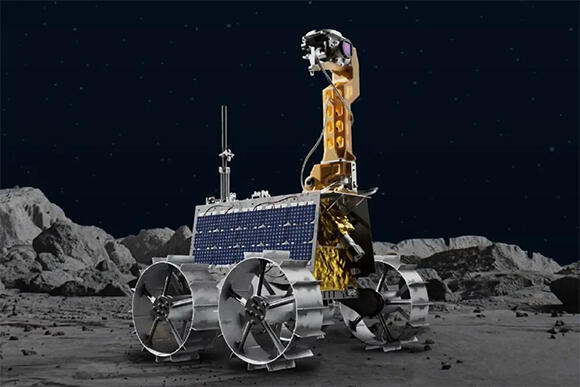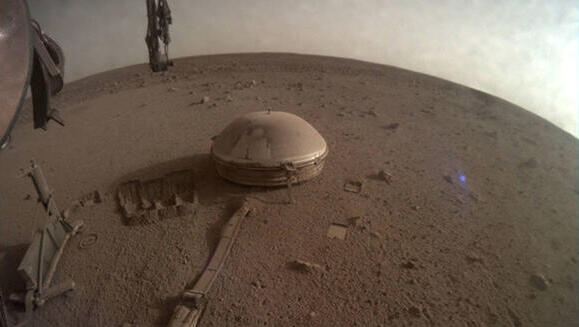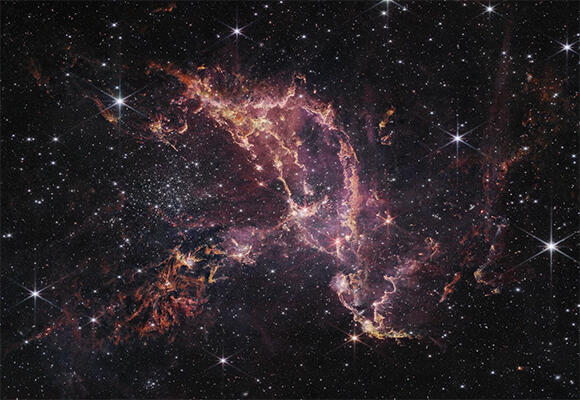Getting your Trinity Audio player ready...
The U.S. Federal Aviation Administration (FAA) has launched an investigation against SpaceX following the explosion of the Starship spacecraft about four minutes after its maiden launch last week.
More stories:
The launch itself went smoothly, but the spacecraft failed to separate as planned from the Super Heavy booster rocket and both plunged together for about a minute before exploding mid-air.
3 View gallery


A change of plans – the Emirati lunar rover, Rasheed, will no longer embark on its Moon journey
(Photo: Mohammed Bin Rashid Space Center)
The FAA is examining claims that debris from the explosion was scattered in the town of Port Isabel in South Texas, about ten kilometers from the launch site, and that it may contain toxic or hazardous materials. Additionally, suspicions that the explosion and debris may harm endangered wildlife in areas near the launch site will be investigated.
The FAA is obligated to investigate any aviation accident, and shortly after the spacecraft's explosion, it announced its intention to launch an investigation. In a statement, the FAA noted that there were no casualties and no reported property damage.
However, shortly afterward, media outlets reported shattered windows in homes in Port Isabel and the dispersion of sand- and ash-like particles. These incidents raised concerns for individuals with respiratory difficulties and the potential harm to wildlife.
Another issue to be investigated is the safety of the company's launch pad. Prior to the mid-air explosion, the launch itself caused severe damage to the launch facility, including the destruction of the concrete pad itself and the scattering of its fragments over a considerable distance.
While the damage occurred at the company's private facility, there were also reports of concrete fragments landing in the sea and posing a risk of hitting fuel tanks, which could have led to much more severe environmental consequences. Thus, the investigation may also extend to the safety of the launch pad itself.
Unlike other bases used for launching large rockets, SpaceX did not construct flame deflector tunnels beneath the launch pad, which typically help to dissipate the flames generated during the launch and minimize the heating of the launch pad. Additionally, no water or foam cannon systems were installed to assist in rapid cooling of the launch pad and allow water to absorb some of the launch shockwaves.
The U.S. Fish and Wildlife Service is documenting the damage caused to nature around the launch site and collecting debris that fell within the Boca Chica State Park, which belongs to the state of Texas. However, the service emphasized that so far, no injured or killed animals have been found as a result of the launch or the mid-air explosion.
SpaceX owner and founder Elon Musk announced shortly after the launch that despite the damage, the company would be ready to try another launch within a month or two. However, an FAA source said that a routine investigation could take several weeks, and a complex investigation, if required, could take several months.
In the meantime, until the investigation is completed or another decision is made on the matter, the Starship spacecraft is grounded, and the company is prohibited from conducting further launches, even if it completes all the necessary preparations from its own perspective.
The Liquid Core of Mars
NASA's Mars InSight lander concluded its mission at the close of last year. Nevertheless, the analysis of data gathered during it over four Earth years of activity on our neighboring planet continues to yield fascinating findings as scientists continue to analyze the collected data. Researchers have now successfully characterized the structure of Mars' liquid core, drawing upon InSight's measurements.
3 View gallery


Seismic waves passing through Mars' core illustration
(Photo: NASA/JPL-Caltech/University of Maryland)
The research team, headed by Jessica Irving from the University of Bristol in England, identified two strong marsquakes that occurred on the opposite side of Mars in August and September 2021. The seismic waves generated by these quakes traveled through Mars' core en route to InSight's measuring instruments, while other waves traversed solely through the planet's mantle, encircling the core, and were likewise detected by InSight's seismograph.
By comparing the characteristics of the two wave types, researchers were able to examine the core's properties and deduce that it is slightly smaller than previously believed, with a diameter ranging between 3,560 and 3,620 kilometers, and slightly denser than earlier estimated. The core is primarily composed of molten iron, however, the researchers estimate that 20-22% of it consists of other elements, including sulfur, oxygen, carbon, and hydrogen.
“Determining the amount of these elements in a planetary core is important for understanding the conditions in our solar system when planets were forming and how these conditions affected the planets that formed,” said one of the study’s co-authors, Doyeon Kim from ETH Zurich.
The James Webb Space Telescope not only provides stunning images of the universe but also interesting scientific findings, and sometimes both. Researchers used the telescope to capture images of a star-forming region in the Small Magellanic Cloud, one of the galaxies closest to the Milky Way.
3 View gallery


Space is more complex than we understand. A James Webb telescope image of the NGC 346 region in the Small Magellanic Cloud, where planets are being formed in places researchers didn't expect
(Photo: NASA, ESA, CSA, O. Jones (UK ATC), G. De Marchi (ESTEC), and M. Meixner (USRA))
The researchers focused the search on areas where relatively small stars, like our Sun, are being formed. During the formation process of such stars, a large amount of dust is created, making them difficult to identify in regular visible light images but detectable in measurements of infrared radiation, as the James Webb can do. However, they estimated that under these conditions, the formation of young stars, there are not enough heavy elements present for the creation of planets.
To their surprise, they discovered that there is sufficient material in these areas for planet formation. In a new article, they report that the scattering patterns of the dust indeed suggest that planets are forming in these regions, even though, according to prevailing models, they should not develop under such conditions.
“It’s giving us a lot more area to start searching for planet formation and star formation beyond what we had originally presumed,” said Dr. Stefanie Milam, the James Webb Space Telescope Deputy Project Scientist for Planetary Science, "Hands down, we’re ready for the next generation of astrophysics."

